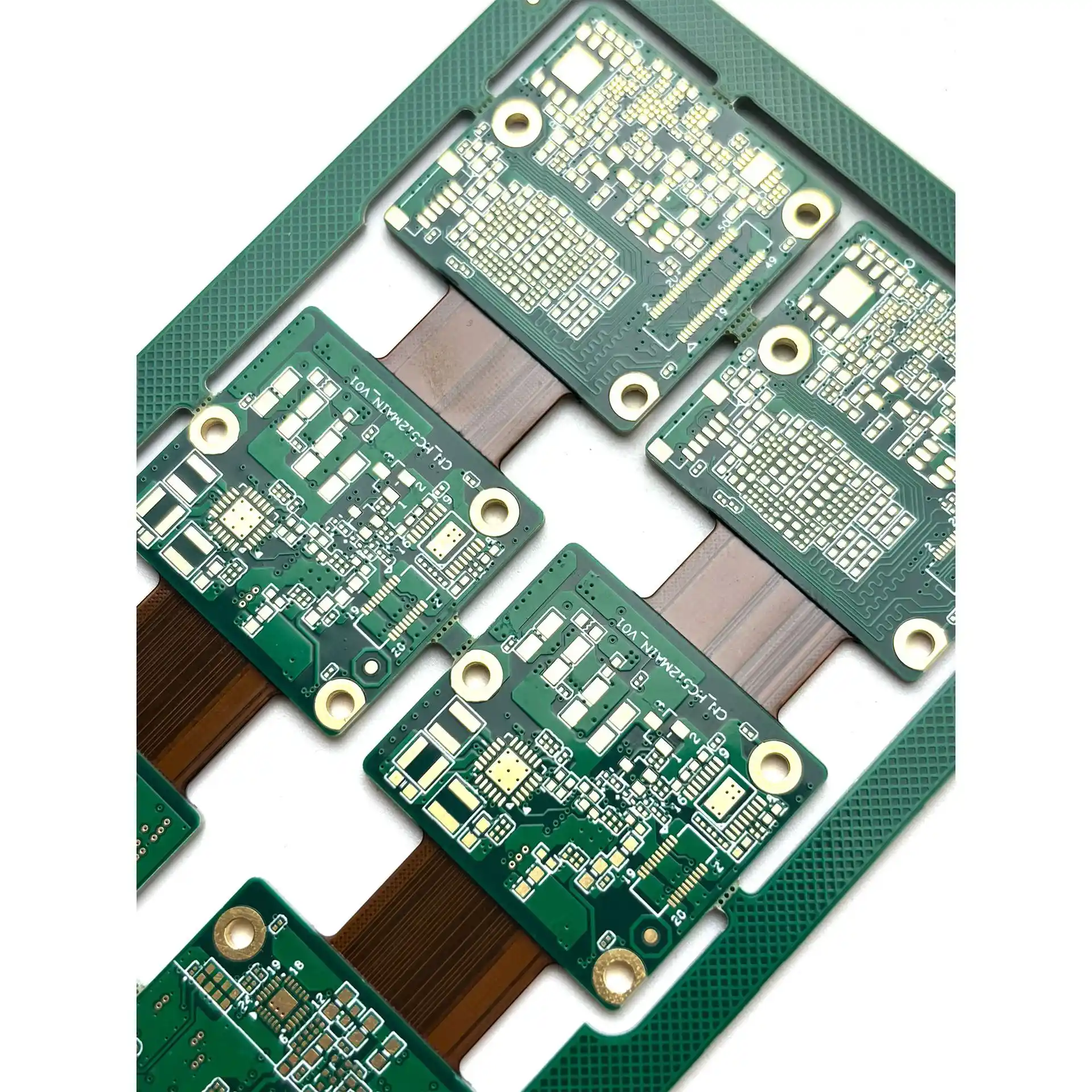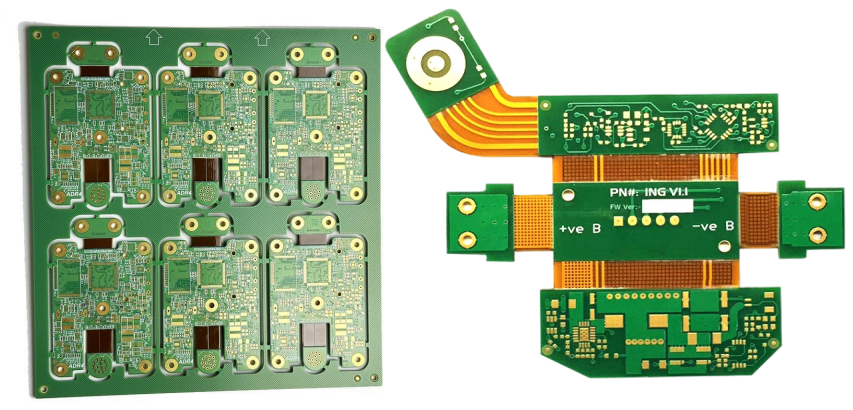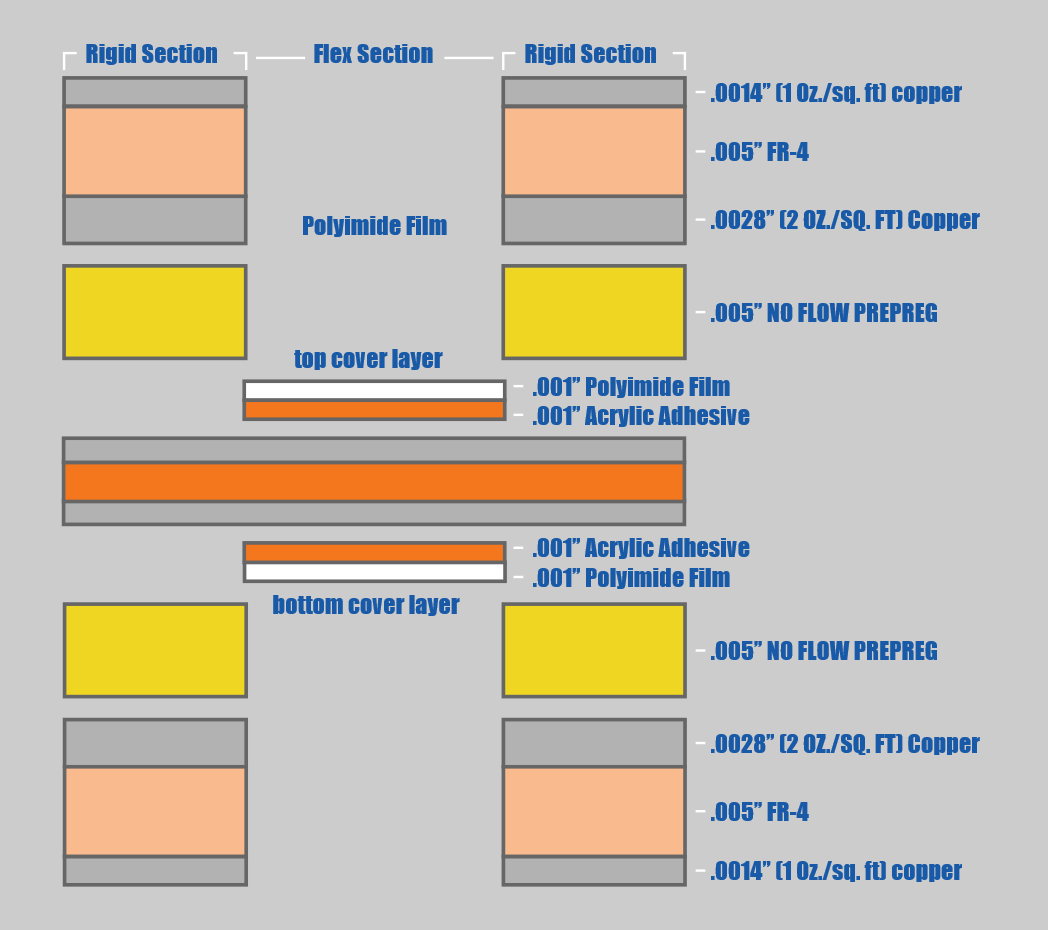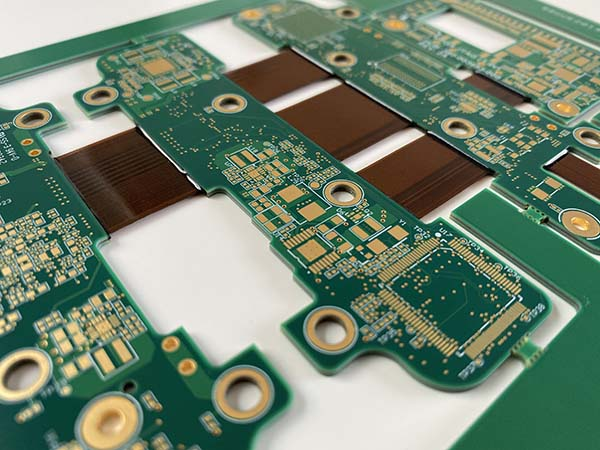In the fast-evolving world of home appliances, innovation is key to creating compact, reliable, and efficient devices. Rigid-flex PCBs (Printed Circuit Boards) have emerged as a game-changer, combining the stability of rigid boards with the adaptability of flexible circuits. This powerful combination is transforming how home appliances are designed and built. Whether you're an engineer, designer, or manufacturer, understanding rigid-flex PCB design principles and their advantages can help you create cutting-edge products. In this blog, we’ll dive deep into the benefits of rigid-flex PCBs in home appliances, material selection, manufacturing techniques, and their applications in appliance controls, ensuring you have actionable insights for your next project.
What Are Rigid-Flex PCBs and Why Do They Matter?
Rigid-flex PCBs are hybrid circuit boards that integrate rigid sections for structural support and flexible sections for adaptability. The rigid parts typically house components like microcontrollers and connectors, while the flexible parts allow the board to bend or fold, fitting into tight or irregular spaces. This unique design makes them ideal for modern home appliances, where space constraints and durability are critical concerns.
In home appliances, rigid-flex PCBs offer a compact solution that reduces the need for multiple connectors and cables, improving reliability and cutting down on assembly costs. From smart refrigerators to wearable home automation controllers, these boards are paving the way for sleeker, more efficient designs. Let’s explore how they’re revolutionizing the industry with a focus on key design principles and practical applications.

Rigid-Flex PCB Design Principles: Building a Strong Foundation
Designing a rigid-flex PCB requires careful planning to ensure functionality and durability. Unlike traditional rigid boards, these hybrid designs operate in a 3D space, allowing for bending and folding. Here are some core rigid-flex PCB design principles to follow:
- Bend Radius Consideration: The flexible sections must have a minimum bend radius to prevent cracking or delamination. A general rule is to maintain a bend radius of at least 10 times the thickness of the flexible material. For instance, a 0.1 mm thick flex layer should have a bend radius of 1 mm or more.
- Layer Stacking: Proper alignment of rigid and flexible layers is crucial. Designers often place flexible layers in the center of the stack-up to reduce stress during bending. A typical 4-layer rigid-flex design might include two rigid outer layers and two flexible inner layers.
- Transition Zones: The areas where rigid and flexible sections meet are prone to stress. Reinforcing these zones with additional material or staggered transitions can prevent failures.
- Component Placement: Heavy or heat-generating components should be placed on rigid sections for stability and heat dissipation, while flexible areas should be reserved for interconnects.
By adhering to these principles, designers can create boards that withstand the mechanical stresses of bending while maintaining electrical performance, such as signal integrity at speeds up to 5 Gbps in high-speed home appliance controls.
Advantages of Rigid-Flex PCBs in Home Appliances
The adoption of rigid-flex PCBs in home appliances is driven by their numerous benefits. These advantages make them a preferred choice for manufacturers aiming to innovate. Here’s why they stand out:
- Space Efficiency: Home appliances like smart thermostats or compact dishwashers often have limited internal space. Rigid-flex PCBs can fold into tight areas, reducing the overall footprint by up to 60% compared to traditional rigid board setups with separate connectors.
- Enhanced Reliability: By eliminating multiple connectors and cables, rigid-flex PCBs reduce points of failure. This is critical in appliances like washing machines, where vibration and movement are constant.
- Cost Savings: Although the initial design cost may be higher, the reduction in assembly steps and components can lower overall production costs by 20-30% in high-volume manufacturing.
- Durability: The flexible sections can endure repeated bending, making them ideal for appliances with moving parts, such as robotic vacuum cleaners.
These benefits translate into sleeker, more reliable home appliances that meet the demands of modern consumers for smart, compact, and durable products.

Rigid-Flex PCB Material Selection: Choosing the Right Components
Material selection plays a vital role in the performance and longevity of rigid-flex PCBs. The materials must balance flexibility, thermal stability, and electrical properties. Here are the key materials typically used:
- Flexible Substrate: Polyimide film is the most common choice for flexible sections due to its high thermal resistance (up to 400°C) and flexibility. It can withstand repeated bending cycles, often exceeding 100,000 cycles without failure.
- Rigid Substrate: FR-4, a fiberglass-epoxy laminate, is widely used for rigid sections. It provides structural strength and supports components with dielectric constants around 4.5, suitable for most appliance control systems.
- Conductive Layers: Copper foil, typically 1 oz (35 μm) thick, is used for conductive traces. Rolled annealed copper is preferred for flexible areas due to its superior ductility.
- Adhesives and Coverlays: Adhesive materials bond the layers, while coverlays protect the flexible circuits. Acrylic or epoxy adhesives are common, offering good adhesion and flexibility.
Selecting the right combination of materials ensures that the PCB can handle the electrical demands of home appliances (e.g., impedance control at 50 ohms for signal integrity) while enduring environmental stresses like heat and humidity.
Rigid-Flex PCB Manufacturing Techniques: From Concept to Reality
Manufacturing rigid-flex PCBs is more complex than traditional boards due to the integration of rigid and flexible materials. Here’s an overview of the key rigid-flex PCB manufacturing techniques:
- Lamination: The process starts with laminating rigid and flexible layers together using heat and pressure. Precision is critical to avoid misalignment, which can cause signal loss or mechanical failure.
- Drilling and Plating: Vias are drilled through both rigid and flexible sections to create electrical connections. Plated-through holes ensure conductivity, often using a copper thickness of 25-50 μm.
- Etching: Copper traces are etched onto the layers using chemical processes. Flexible areas require finer traces (down to 0.1 mm) to maintain flexibility without breaking.
- Cutting and Shaping: The board is cut to its final shape, with flexible sections often pre-bent during manufacturing to match the appliance’s design.
Advanced manufacturing also involves testing for bend reliability and thermal performance, ensuring the board can operate within a temperature range of -40°C to 85°C, common in home appliance environments.

Connecting Rigid and Flexible Sections of a PCB: Ensuring Seamless Integration
The transition between rigid and flexible sections is a critical aspect of rigid-flex PCB design. Poor connections can lead to mechanical stress or signal degradation. Here’s how to ensure seamless integration when connecting rigid and flexible sections of a PCB:
- Staggered Transitions: Avoid abrupt changes by gradually transitioning from rigid to flexible materials. This reduces stress concentration, extending the board’s lifespan.
- Reinforcement: Adding stiffeners or extra layers at transition zones can prevent cracking. For example, a thin polyimide stiffener can increase durability by 30% in high-stress areas.
- Via Design: Use teardrop-shaped vias at transitions to minimize stress on copper traces. This design can improve reliability during bending by up to 25%.
- Trace Routing: Route traces perpendicular to the bend line in flexible sections to avoid breakage. Keep trace widths consistent (e.g., 0.2 mm) to maintain impedance control.
Proper integration ensures that signals travel smoothly between sections, maintaining performance in applications like appliance control panels with high-frequency signals up to 2.4 GHz for wireless connectivity.
Applications of Rigid-Flex PCBs in Home Appliance Controls
Rigid-flex PCBs are increasingly used in home appliance controls due to their versatility and reliability. Here are some specific applications of rigid-flex PCBs in home appliance controls:
- Smart Refrigerators: These appliances use rigid-flex PCBs to connect control panels, sensors, and displays in a compact layout, reducing wiring by up to 50%.
- Washing Machines: The flexible sections allow boards to fit around moving parts like drums, while rigid areas support power circuits handling currents up to 10A.
- Home Automation Hubs: Rigid-flex designs enable compact controllers that integrate Wi-Fi modules and touch interfaces, supporting data rates of 150 Mbps or more.
- Microwave Ovens: These boards connect control interfaces to power systems, withstanding temperatures up to 100°C during operation.
These applications highlight how rigid-flex PCBs enable smarter, more connected home appliances that cater to modern lifestyles.

Designing Durable Rigid-Flex PCBs: Tips for Longevity
Durability is a top priority when designing durable rigid-flex PCBs for home appliances, where devices face constant use and environmental challenges. Here are some tips to enhance longevity:
- Thermal Management: Use materials with high thermal conductivity and place heat sinks on rigid sections to dissipate heat from components like power regulators, which can generate up to 5W of heat.
- Environmental Protection: Apply conformal coatings to protect against moisture and dust, especially in appliances like dishwashers with humidity levels reaching 90%.
- Stress Testing: Simulate bending cycles (e.g., 10,000 cycles) during the design phase to identify weak points in flexible areas.
- Component Selection: Choose components rated for wide temperature ranges (-20°C to 85°C) to ensure performance in varying conditions.
By focusing on these factors, designers can create rigid-flex PCBs that last for years, even in demanding home appliance applications.
Conclusion: The Future of Home Appliances with Rigid-Flex PCBs
Rigid-flex PCBs are reshaping the landscape of home appliance design with their unique blend of stability and flexibility. From enabling compact smart devices to enhancing reliability in high-stress environments, these boards offer unmatched advantages. By understanding rigid-flex PCB design principles, material selection, and manufacturing techniques, engineers and manufacturers can push the boundaries of innovation. Whether it’s optimizing space in a smart refrigerator or ensuring durability in a washing machine, rigid-flex PCBs provide the foundation for the next generation of home appliances.
As technology continues to advance, the role of rigid-flex PCBs will only grow, driving smarter, more efficient designs. With the insights shared in this blog, you’re equipped to explore their potential and apply them to your projects, ensuring your products stand out in a competitive market.
 ALLPCB
ALLPCB







